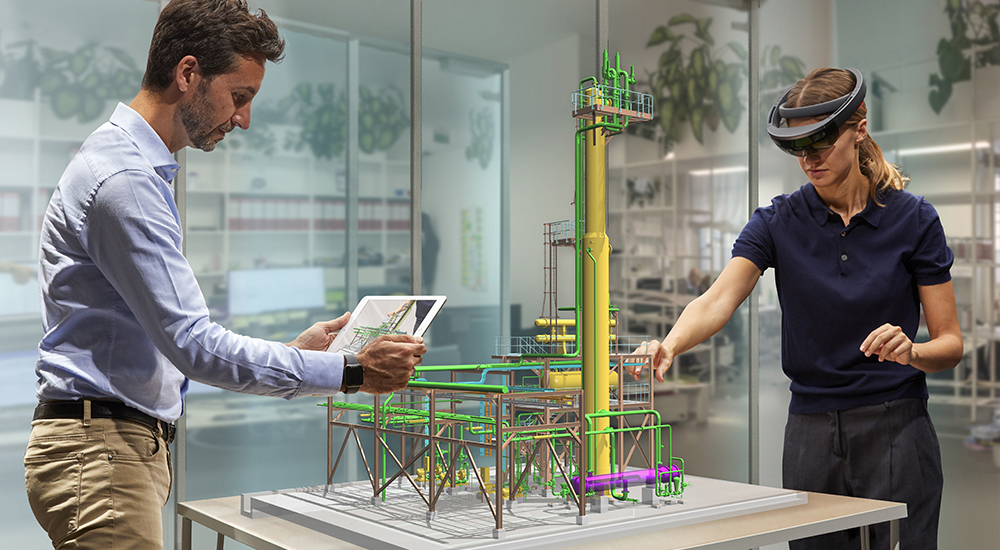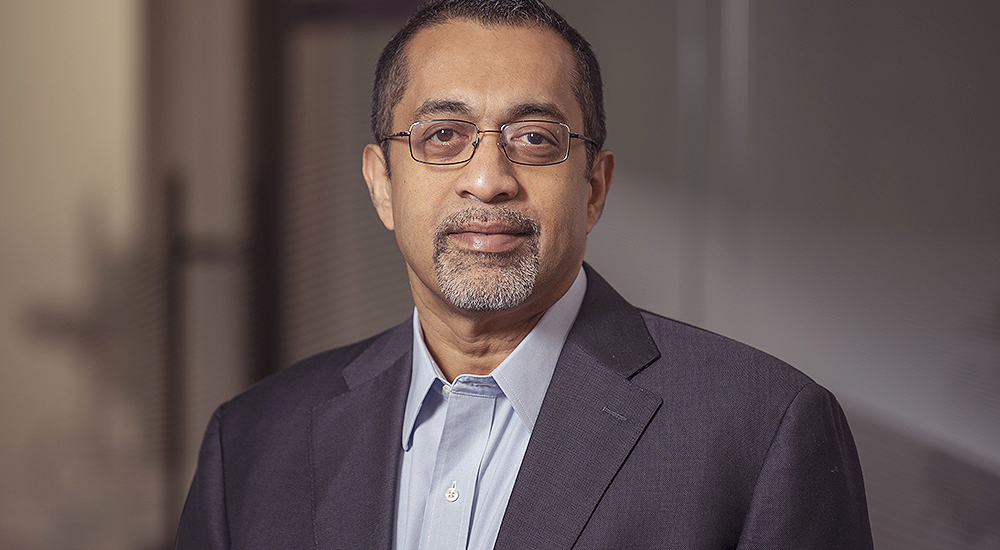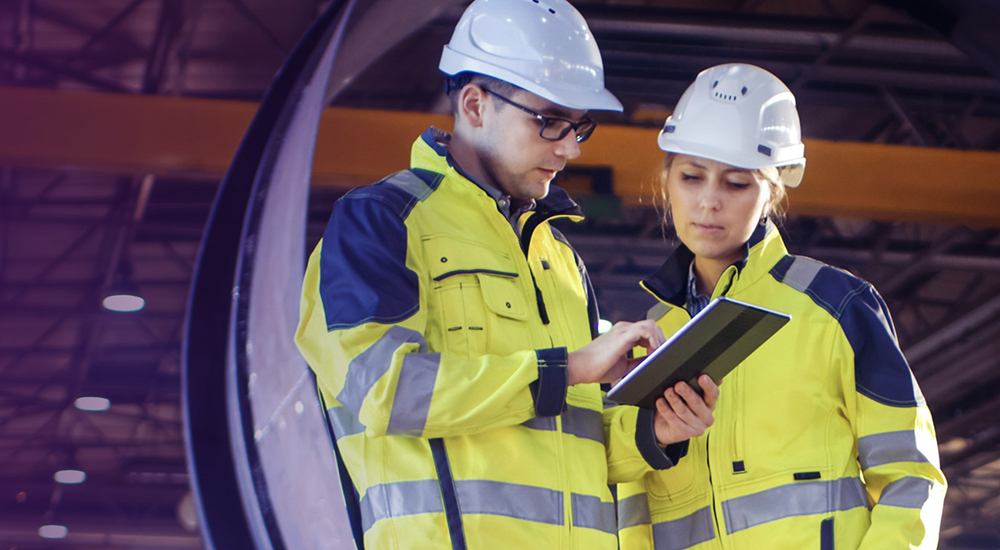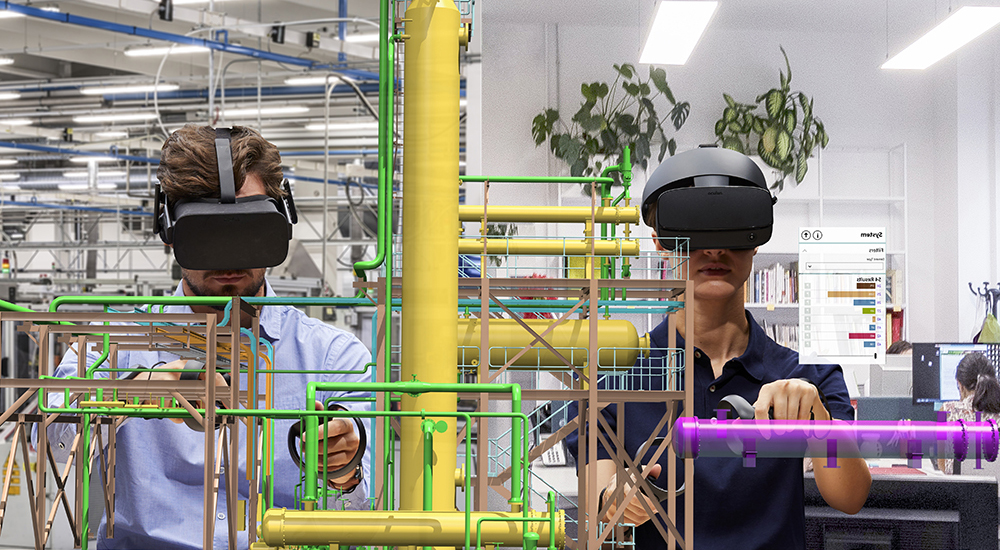Arrival of the digital twins and transformation of industries

When AVEVA and Schneider Electric partnered in early 2018, there was a definitive rationale for going ahead with that combination. There was significant digital transformation taking place and this would also get unlocked in the industrial sector.
Historically, AVEVA has driven the capability to develop and commission capital projects, while Schneider Electric’s capability has been in the management and operation of those capital assets.
Looking back further, the origins of AVEVA trace back more than 50 years, to Cambridge, England, with the establishment of the CADCentre. It was a government-funded research institute created by the UK Ministry of Technology, with a mission to develop computer-aided design techniques. A lot has changed in the industry and for this vendor organisation in those last five decades.
Today AVEVA solutions sit on the top layer of Schneider’s EcoStruxure stack. About the products, it is a classic case of sell with, sell through partnership, indicates Ravi Gopinath, Chief Cloud Officer and Chief Product Officer.
Unlocking of digital transformation across industries has been boosted through a number of independent drivers that have come together to create a point of inflection.
The bridging of the two worlds, operational technology and information technology, has existed for some time now. This has been boosted by the ability to contextualise and visualise data in real time and make it accessible in multiple applications.
However, a more recent arrival in the industrial sector has been the opportunity to convert capital asset expenditures into a recurring operational expenditure. “The IT-OT bridge, and the bridge from Capex to Opex, are the two chasms that industries are looking at crossing at the same time,” according to Gopinath.
“We had already started to see in the markets that customers were looking at how to bridge these two chasms,” he points out. “And while digital transformation and going digital was important for all of our customers, it really was not specified in any, precise terms as it were,” he adds.
AVEVA’s starting position has been managing lifecycle of assets across the operational value chain. AVEVA’s solutions rest on the core assumption that there is a persistent, common digital thread, from inception of a capital asset through its lifecycle into operations. This needs to be looked at on a day-to-day basis in the context of real time operations.
AVEVA’s portfolio of solutions is built on four big delivery pillars. This includes enabling capital efficiencies for customers; enabling high visibility into real time operations; providing applications to ensure reliable, safe operations of capital assets; and being able to optimise constantly across the value chain.
Pandemic’s impact
When the world of demand and supply was disrupted, life did not stop. Instead, the world has been adapting and changing. With global transportation networks also disrupted, industries had to pivot rapidly into sourcing locally rather than globally.
The pandemic and the external macro environment have impacted projects in the industrial sector. Capital projects that were in the pre-feed stage have been sent back for re-evaluation, to reassess if they are still viable. “We believe 60%-65% of capital projects in the planning stage have gone back for re-evaluation,” says Gopinath.
Capital projects that were already in a state of execution have continued. What customers are now expecting is to complete them in a cost and time effective manner. “We saw the emphasis in capital projects change, over the past year as Covid emerged,” remarks Gopinath.
Another course correction that influenced capital projects was the impact and creation of remote workforces. “There was a demand for greater remote visibility into the operations of the asset. The reality was that people were just not in operating facilities as much and customers had to re-evaluate their entire workforce,” explains Gopinath.
The expectation from the customers’ operating workforce was to have a much higher level of visibility into what is happening on a day-to-day basis, when they are not in the facility, and are remote and distributed.
During the pandemic, all the complex and mission critical assets were functioning. And this required a high level of visibility and reliability for the safe functioning of the assets. This has created the new theme of autonomous operations.
“While reliability and predictive analytics was a flavour for digital transformation, it suddenly became very real for asset operations,” reflects Gopinath.
For AVEVA, the key expectations from its end customers as they adjust to the new realities created in the post pandemic, include digital tools for collaboration; real time visualisation, monitoring and control; asset performance and reliability; and agility in the supply chain.
“The themes have remained the same, but the imperatives and the problem statements have become more amplified,” points out Gopinath.
New personas
Digital transformation is also influencing the nature of the decision makers that AVEVA engages with. “The CIO is becoming an increasingly visible persona, especially where some of the applications are highly interlinked with enterprise applications,” points out Gopinath.
And the reason – the gateway interconnecting operational technology tools like asset reliability management, supply chain management, has to be efficiently interconnected with enterprise applications on the information technology side as well.
“You now start to find the emergence of the information technology organisation as a customer persona,” as well, remarks Gopinath.
However, the involvement of the CIO in setting up legacy industrial solutions as well, is not a very recent phenomenon. Traditionally the cross-over of these solutions between the industrial and digital side used to be done through the manufacturing execution system layer.
“This is the layer that sits between the SCADA control systems and the enterprise ERP, in the old terminology,” reflects Gopinath. “And the question has always remained – who owns this?”
In reality, the ownership of this pivotal layer, the manufacturing execution system layer, varies and depends on the individual organisation and its strategic and cultural outlook.
While the CIO or the information technology arm of the enterprise is becoming much more prevalent, there is the emergence of the Chief Digital Officer as well. Through the wave of digital transformation accelerated by the pandemic, functional silo officers still continue to remain in place.
“But it is the Chief Digital Officer that is increasingly empowered to drive this digital backbone as a change across the enterprise,” points out Gopinath.

Cloud power
The twin onslaughts of the pandemic and digital transformation have changed the complete outlook of IT decision makers. For them today’s top software application priorities include standardisation, ease and consistency of deployment, and minimal customisation.
“Cloud as a deployment mechanism, and subscription as a commercial mechanism is how we are addressing that challenge. By deploying software in the cloud, you are enabling the implementation of corporate standards, in terms of how processes should be digitised, how they should be managed, and how they should be visualised,” says Gopinath.
“This is a big tick mark for the new stakeholders and having a centralised cloud deployment is probably the most sure-fire way of doing it,” adds Gopinath.
As part of its cloud journey and for its customer’s cloud journey, AVEVA has standardised on Microsoft Azure and AWS hyper scalar cloud platforms. Microsoft Azure is used to host AVEVA’s operational technology solutions and AWS for its engineering software applications.
AVEVA decided to include the cloud platform early in the game. “So that has really not been a challenge and it is supporting our strategy well,” says Gopinath.
“We are not trying to replicate or recreate any of the services that either Microsoft, AWS or anyone else may provide. We will create the platform capabilities, monitoring capabilities, application capabilities, leveraging that as well as the infrastructure. Our partnership, both with AWS and Microsoft is very central to the shift in our strategy and I think that is the way things are going,” he continues.
AVEVA has also simplified its pricing to make it easy for its customers to activate their licensing. Whether it is single instance cloud hosting, public cloud, or hybrid cloud, they have all been standardised into one subscription currency, branded as AVEVA Flex. Customers buy credits under contract as part of AVEVA Flex and can consume it flexibly over a period of time.
Today’s digital twin
The digital twin concept started to gain momentum in the early part of this decade. Wikipedia describes digital twin as the generation of digital data representing a physical object.
The connections between the physical and digital product are data that flows from physical to digital and information that is available from the digital to the physical environment. The specific information contained in the digital twins is driven by use cases. The digital twin is only a logical construct, meaning that actual data and information may be contained in other applications.
However, with the advancement of digital transformation within industries, the term digital twin has taken on additional meanings as well.
The digital twin is now helping to bridge the chasm between Capex and Opex services and their worlds of payment and subscription. It is also interconnecting the shop floor layer and the enterprise layer.
The digital twin has become the means to capture data across assets and real time operations. It has become supported by rich models of analytics and contextual data visualisation. These combined are the core of today’s digital twin. Remote workers who do not have decades of hands-on industrial experience, can gain access to it through AVEVA’s digitally enabled industrial applications.
“We are looking at the gateway, as a bridge between Capex and Opex, between IT and OT, and that is a digital twin. We are starting to see how it is emerging as different flavours of use cases, in different industries and different customers. I believe it will be two or three years till we have a sort of standardised definition,” elaborates Gopinath.

Digital differentiation
There are two principal data pathways inside large businesses, that will continue to develop in the future as well. The first is the enterprise transactional backbone, built around ERP and other transactional application systems. “That is a space we do not operate in, but we have to integrate with that,” says Gopinath.
However, it is the digital backbone that addresses core business processes, and it is the one in which AVEVA operates.
Enterprise application vendors can setup and operate an enterprise backbone, provide technology solutions to support big data for example, but without domain expertise and the right application suite, that infrastructure would not deliver any value for the customer.
In the hype of digital transformation, there is a tendency by enterprise application vendors to collect data, throw it into a data lake, throw some generic algorithms at it, and yield some results from pattern recognition.
“Without the context of the domain that really guides your analytics, vanilla data science is only going to get you that far and is only slightly better than playing poker. It is a great buzzword for a while and it is cool and hip. But you do have to make sure that there is real domain content. That is what we bring to the table,” stresses Gopinath.
“You can feed tonnes of real time data, but if there is no application that can contextualise abstracted data, give automated guidance, run complex models, it really does not deliver value,” says Gopinath, differentiating the role that AVEVA will play in comparison to other enterprise application vendors.
AVEVA has a long baseline of 50+ years of building domain expertise in designing capital projects, managing real time operations, advanced modelling and simulation, and these are not easily replicable. “The entry barrier to doing this is extremely high,” says Gopinath.
While AVEVA has invested significantly into technology platforms to boost its capability in digital transformation in the near term, it has not lost sight of what has differentiated it from the others. “And that is the richness of our domain content. I think that will endure,” feels Gopinath.

Key takeaways
- The IT-OT bridge and the bridge from Capex to Opex, are the two chasms that industries are looking at crossing.
- AVEVA’s portfolio of solutions is built on four big delivery pillars.
- 60%-65% of capital projects in the planning stage have gone back for re-evaluation.
- The market themes have remained the same, but the imperatives and the problem statements have become more amplified.
- Customers were looking at how to bridge these two chasms.
- AVEVA’s starting position has been managing lifecycle of assets across the operational value chain.
- AVEVA’s solutions rest on the assumption that there is a common digital thread from inception of a capital asset through its lifecycle.
- The emphasis in capital projects changed over the past year as Covid emerged.
- There was demand for greater remote visibility into the operations of the asset.
- The reality was people were not in operating facilities and customers had to re-evaluate their workforce.
- During the pandemic, complex and mission critical assets were functioning.
- Mission critical assets required a high level of visibility and reliability for the safe functioning of the assets.
- Mission critical assets has created the theme of autonomous operations.
- Digital transformation is influencing the nature of decision makers that AVEVA engages with.
- CIO is becoming an increasingly visible persona, especially where AVEVA applications are interlinked with enterprise applications.
- While the CIO is becoming more prevalent, there is the emergence of the Chief Digital Officer as well.
- Through the wave of digital transformation accelerated by pandemic, functional silo officers still continue to remain in place.
- AVEVA has standardised on Microsoft Azure and AWS hyper scalar cloud platforms
- Microsoft Azure is used to host AVEVA’s operational solutions and AWS its engineering software applications.
- The digital twin has become the means to capture data across assets and real time operations.
- AVEVA’s digital twin is supported by rich models of analytics and contextual data visualisation.
- Remote workers who do not have decades of hands-on industrial experience, can gain access to it.
- We are looking at the gateway, as a bridge between Capex and Opex, between IT and OT.
- It will be two or three years till we have a sort of standardised definition for digital twins.
- Without the context of the domain that guides analytics, vanilla data science is only going to get you that far.





